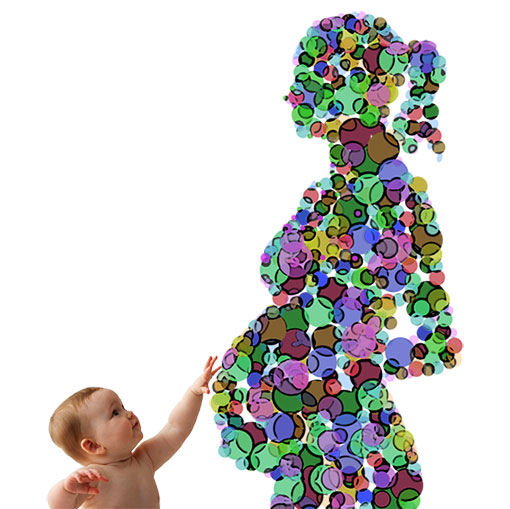About one in three babies in the UK are born by Caesarean section; half of these being planned and half being performed as an emergency, due to concerns for the wellbeing of the mother or the baby during labour. Over the last decade there have been concerns raised that children born by Caesarean section are at a higher risk of immune-related diseases such as asthma, type 1 diabetes and inflammatory bowel disease, as well as obesity.
Whilst there may be many confounding factors explaining these associations, one of the plausible mechanisms may be that babies born by C-section are not exposed to vaginal bacteria in the same way as babies born vaginally. The vaginal microbiome is one of my main research passions (yep, that’s right, I love exploring vajayjay bugs), and something I have previously written about if you want a refresher. It’s thought exposure to this bacterial population colonises the baby, which has an impact on the bacteria that it subsequently goes on to carry, and can in turn programme its immune system, hence the impact on future disease outcomes for the baby.
A very simple way of overcoming this would be to use vaginal seeding, which involves putting a swab into the mothers vagina to collect bacteria and then lying it over the nose and mouth of the baby during the first moments of life, to simulate the inhalation and swallowing of vaginal bacteria that takes place during a vaginal delivery. Sounds pretty simple and harmless? We’re not really sure. Whilst there is currently one rather encouraging published study describing the use of vaginal seeding, the authors only describe its use in four patients. That’s right. FOUR. In spite of this, there has been a wave of future parents requesting vaginal seeding to be performed by their obstetricians and midwives, which was highlighted in a paper that was published in the British Journal of Obstetrics & Gynaecology this week. Whilst the paper doesn’t add any new data, it is a pertinent reminder to expectant mothers and healthcare providers that we really don’t know enough about the safety to be able to give any evidence-based recommendations. The main concern is that seeding could introduce disease-causing bacteria, such as Chlamydia, group B Streptococcus and E.coli, which can live harmlessly or without symptoms in the mother but cause major infections and life-threatening sepsis in the newborn. Of course, potential mothers could be screened for these bugs, but we have to remember that we still don’t fully understand the role of certain common vaginal bacteria in mothers, nevermind their effect on the health, and immune programming of the baby. Lactobacillus iners springs to mind at this point. Lactobacillus is generally regarded as a ‘healthy’ group of bacteria, but there is a lot of debate as to whether the L.iners variety fit in with the rest of the healthy gang. As you can see, there are knowledge gaps to fill. There is currently one clinical trial underway in the US exploring the safety and efficacy of vaginal seeding, and there are countless other studies underway aiming to try and understand the role of the vaginal microbiome in the short- and long-term health of babies, so I’m sure there will be plenty of really interesting answers coming over the next few years.
The paper in the British Journal of Obstetrics & Gynaecology also highlights that other studies have shown maternal diet during pregnancy, breastfeeding and early skin-to-skin contact can also have a major impact on health outcomes, so mode of delivery is probably just one part of a bigger picture. Of note, Caesarean section does not rule out early skin-to skin contact as many people may think. As soon as the baby has been delivered and a midwife or paediatrician has determined there are no immediate health concerns for the baby skin-to-skin contact can begin, and I’ve certainly closed a lot of Caesarean wounds with babies rustling in the drapes above, probably looking for some of that oh so intoxicating boob juice.
For now though, if you have to have a Caesarean section
1. please don’t see it as a failure on yourself as a woman
2. remember that the type of delivery is one part of a big picture that dictates health outcomes for your child
3. the data is lacking regarding whether or not it’s safe to do vaginal seeding, so it’s probably best avoided until that data is available.

